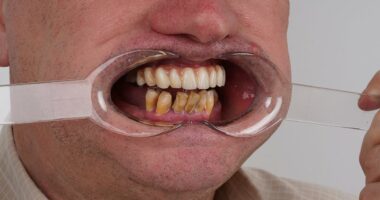Share this @internewscast.com
When it comes to watching your cholesterol levels, the eyes could signal if you are currently holding too much of the fatty substance. The problem with an excess of cholesterol in the body is that it could eventually block blood vessels, leading to a life-threatening stroke or heart attack.
According to eye specialists at Care Optics, if you develop “yellow bumps around the eyes”, this is indicative of dangerous cholesterol levels. These yellow bumps are known as xanthalasma and they warrant a prompt doctor’s appointment. This is because these bumps could prelude to “three very serious conditions” – age-related macular degeneration, retinal vein occlusion, and corneal arcus.
The NHS says a blood test can verify your current cholesterol levels and a nurse or doctor can follow up with you about your results.
A cholesterol reading typically includes total cholesterol, HDL (high-density lipoprotein cholesterol), and non-HDL.
A healthy total cholesterol reading should be below 5mmol/L whereas HDL (a good type of cholesterol) is above 1mmol/L.
As for non-HDL – the reading that really matters – a healthy person would have a reading below 4mmol/L.
The doctor may give you a QRISK score which estimates how likely you are to have a heart or circulation problem over the next 10 years.
How to reduce cholesterol levels
Simple dietary swaps can add up to make a big difference to your cholesterol levels.
For example, instead of meat pies or sausages, it’s better to eat oily fish such as mackerel and salmon.
For further illustration, replace meat pie for salmon, which can still be served alongside mash and peas.
Instead of white rice, choose brown rice; swap out white bread for wholegrain bread; and opt for wholewheat pasta.
When it comes to snacking, the best options are nuts, seeds, and fruit (instead of cakes and biscuits).
It’s also key to move your body for at least 20 minutes daily, such as a brisk walk, swimming, cycling, or playing a sport.
The NHS says: “Try a few different exercises to find something you like doing. You’re more likely to keep doing it if you enjoy it.”















